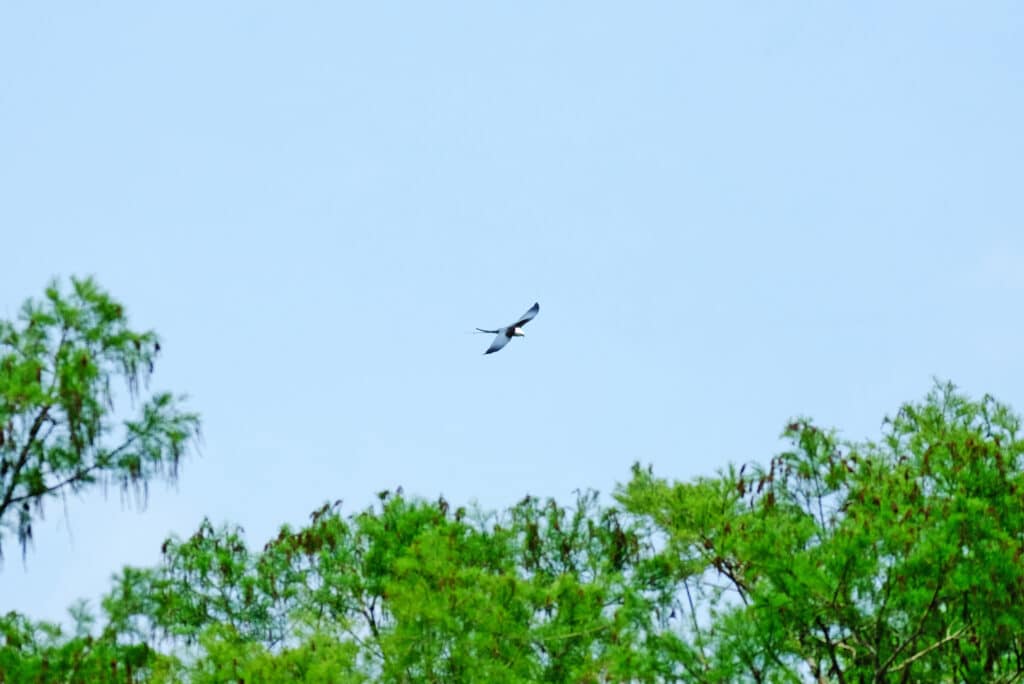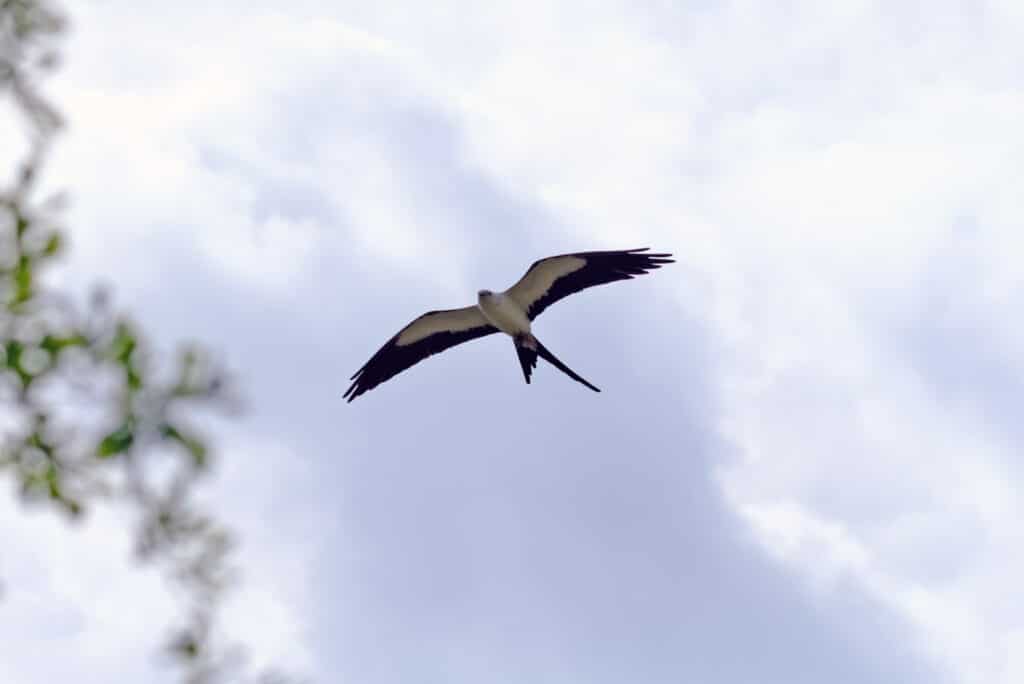Swallow-tailed Kites are lovely birds that draw people into nature and help us appreciate the beauty of the natural world. They resemble doves in the body, with sweeping black wings and what some describe as an “angelic” presence. These attributes make them a huge draw for birders and photographers, and if you happen to see a Swallow-tailed Kite somewhere in their Gulf Coast breeding range, you can consider yourself lucky!

We were fortunate to see several Swallow-tailed Kites during our recent paddle trip in the Maurepas Swamp Preserve, a designated Important Bird Area. Unfortunately, their breeding range and population have decreased throughout the south in recent decades, likely due to extensive logging and loss of prairie and wetland habitat. We’re grateful to the folks working to monitor and support migratory birds like the Swallow-tailed Kite — people like Jennifer Coulson, avian ecologist and President of the Orleans Audubon Society. She recently found two nests with chicks at The Nature Conservancy’s Abita Creek Flatwoods Preserve! The Land Trust for Louisiana holds the conservation easement at this site.

Swallow-tailed Kites favor tall old slash pines in the savanna drains for their nests, due to the limb structure. While their breeding grounds have grown limited due to habitat conversion, they are not listed as federally endangered — although they are listed as a Species of Greatest Conservation Need in the states where they breed, and it is against the law to harm a Swallow-tailed Kite.
Their resilience may be due to their adaptability. They like heterogeneous areas such as swamps, pine, savanna, and even agricultural land; and prefer places where there is good insect feeding. Prescribed burning is important for habitat maintenance in places like the Abita Flatwoods, and the birds respond well to this cycle. They begin circling when they see that burning is about to begin, and love to feed on the insects that fly up at burn sites.
The more we do to preserve pine wetlands like the Abita Flatwoods, and cypress-tupelo swamp like the Maurepas Swamp Preserve, the better it will be for Swallow-tailed Kites and other species that have seen their breeding grounds shrink due to habitat loss. As always, thank you for supporting the conservation work that supports migratory birds!




